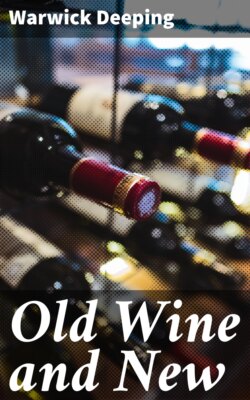Читать книгу Old Wine and New - Warwick Deeping - Страница 28
На сайте Литреса книга снята с продажи.
4
ОглавлениеTable of Contents
Scarsdale went on walking, and his restlessness walked with him. He strolled down Whitehall, and past St. Stephen’s, and struck the Thames at high tide. He followed the river, and found himself wondering at its life, at the life on a barge or a tug. Were those other men restless, or did the world of the river suffice them, with the realities of its ebb and flow, and the coming and going of merchandise?
He rediscovered the Tate Gallery and remembered days very long ago when he had known a passion for Dante Gabriel Rossetti’s women. What a name, and what women! And those sorrowful, sweet, sensual mouths! He felt rather old and sad. He walked on, and rediscovered Chelsea, and the trees of Battersea Park, and Chelsea Hospital, and the Albert Bridge, and Cheyne Row. Battersea suggested nothing to him save recollections of some students’ rag about a dog, though Battersea was to be famous for other rags and rednesses. Cheyne Row propounded problems. He strolled along looking at the houses, finding himself vaguely distressed by a beauty and a dignity that were like the dead leaves of a happy and memorable year. He was perplexed. He wondered why those old houses should make him sad. Was it that they tantalized him, and tempted him to yearn for something that was not his, success and the beauty of it, spacious rooms, blue doors and balconies, and calm-eyed stately windows? This was not Taggart and the Sabbath, nor was it Australia and young wenches with dangling legs. Nor was it Spenser Scarsdale, nor the war, nor the peace.
At Church Street he left the river, and finding himself in King’s Road he ceased to be a mere piece of drifting, human restlessness. He remembered the name of Marwood. He realized that he had wandered into the Marwood world, and that on occasions he has made imaginary descents upon that world to review the face of Marwood’s daughter. A live curiosity stirred in him, and something more than mere curiosity, for he stopped in front of a postman and asked to be directed.
“Can you tell me the way to Spellthorn Terrace?”
“Cross the road. First on your right.”
“Thank you.”
In rediscovering Spellthorn Terrace the memories of that October night came back to him with sudden vividness, the darkness, the wet pavements, his fumbling at the door; his interview with Marwood’s daughter, his return to the darkness, the dead leaves, the lovers huddled against the railings. Was No. 53 still Marwood? Walking along the opposite pavement he observed the row of little houses. They were alike, yet each seemed to differ like a human face. He saw a succession of privet hedges and iron railings, minute front gardens, flights of steps going up to doors sunk under shallow arches. The doors were brown and blue and green, but brown predominated. Each house had four windows. A cornice linked up the whole row, and above the cornice a collection of strange chimney-pots posed themselves against the sky. Some were brown and some white; some were mere red tubes, and others capped and moulded. Some had cowls and elbow-shaped attachments of zinc. Their variousness gave to the row an individual aliveness.
Scarsdale, moving along the opposite pavement, passed No. 53 and observed it. The door was green, but a rather faded green, and so were the railings. There were yellow plush curtains at the lower window, and lace curtains up above. An aspidistra in a brass pot occupied the space between the folds of yellow plush. He walked as far as Spellthorn Square, and crossing the road, returned slowly along the other pavement. It was a very quiet street, almost as quiet as on that night when he had brought to Julia Marwood her dead father’s letters and photographs.
